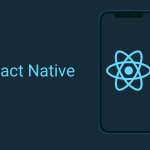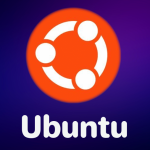In the modern programming landscape, where speed, safety, and efficiency define success, Rust has emerged as one of the most promising languages of the decade. Created by Mozilla, it was designed to solve some of the toughest problems faced by developers today memory safety, concurrency, and performance. It blends low-level control with high-level safety guarantees, making it a top choice for systems programming, web assembly, and even AI workloads.
Table of Contents
What Makes it Different
Rust’s unique appeal lies in its focus on memory safety without using a garbage collector. Unlike traditional languages like C and C++, it uses an ownership and borrowing system that ensures safe memory access during compile time. This prevents common bugs such as null pointer dereferencing, buffer overflows, and data races issues that often cause serious security vulnerabilities.
At its core, it offers performance comparable to C++ but with safety features that minimize runtime errors. This means developers can build robust applications that run faster and crash less frequently. The official documentation is an excellent starting point for anyone looking to understand the language’s syntax and philosophy.
Key Features of Rust
1. Ownership and Borrowing System
Rust’s ownership model is its biggest innovation. It enforces strict rules on how data is accessed and shared, ensuring memory safety at compile time. This eliminates the need for garbage collection, which improves performance and predictability.
2. Concurrency Made Simple
It provides thread safety without complexity. Its type system prevents data races, which are common in multithreaded programming. Developers can write concurrent code with confidence that it will behave as expected.
3. Zero-Cost Abstractions
Rust’s abstractions come at no runtime cost. This means you can write high-level, expressive code without sacrificing performance an ideal balance for both low-level systems and application development.
4. Strong Ecosystem and Tooling
With the Cargo package manager and crates.io, managing dependencies and building projects is incredibly simple. Cargo handles compilation, testing, and documentation seamlessly.
Uses
Rust is no longer a niche language. Major companies like Microsoft, Google, Amazon, and Dropbox use it in production environments. Microsoft has started using it for secure systems components in Windows, while Amazon uses it for cloud services in AWS.
Even the Linux kernel has begun integrating code for safer module development. Its integration into the kernel marks a major step forward for the language’s adoption in critical infrastructure.
For web development, frameworks like Rocket and Actix enable building high-performance web applications in it. Meanwhile, WebAssembly (Wasm) support allows developers to write secure, fast client-side code that runs directly in browsers.
Use in the AI and Data Science Ecosystem
While Rust is not traditionally seen as a data science language like Python, it’s increasingly being used for AI model optimization and large-scale computation. Libraries such as Tch-rs (a Rust binding for PyTorch) and Polars (a high-performance data processing library) are showing how it can bring speed and memory efficiency to data-heavy tasks.
Moreover, the integration of it with TensorFlow and ONNX frameworks is growing, allowing developers to leverage the performance benefits of Rust while using familiar machine learning tools.
Learning it as a Beginner
If you’re coming from a background in C++, Python, or JavaScript, learning it might feel challenging at first. Its strict compiler rules can be intimidating but they are designed to make you a better programmer. Once you get comfortable with the ownership model, Rust becomes an incredibly rewarding language to work with.
Beginners can start with The Rust Book, available for free at Rust Document, which provides hands-on explanations and examples. Other excellent learning platforms include Rust by Example and interactive tutorials on Rust Playground.
Why it Is the Future of Programming
The growing adoption of Rust across major tech companies, open-source projects, and even academia highlights its potential as the future of safe and efficient software development. In an era where cybersecurity and system reliability are critical, it offers a unique balance of speed, safety, and scalability.
Its versatility from embedded systems to cloud infrastructure ensures that it will remain a powerful tool in the developer’s arsenal for years to come. The language’s active community and strong developer support make it even more appealing for long-term projects.
Final Thoughts
Rust has redefined what developers can expect from a modern programming language. It brings together the best of both worlds: the performance of C++ and the safety of a high-level language. Whether you are building web servers, game engines, or machine learning tools, it gives you the confidence that your code will be fast, secure, and reliable.
As the world moves toward safer and more efficient computing, it stands out as a language truly built for the future. To learn more, visit the official Rust website and join the global community of developers shaping tomorrow’s technology with Rust.
Also Check Next.js – Ultimate Path to Modern React Apps – 2025







1 thought on “Rust Programming – Future of Safe & Fast Development – 2025”